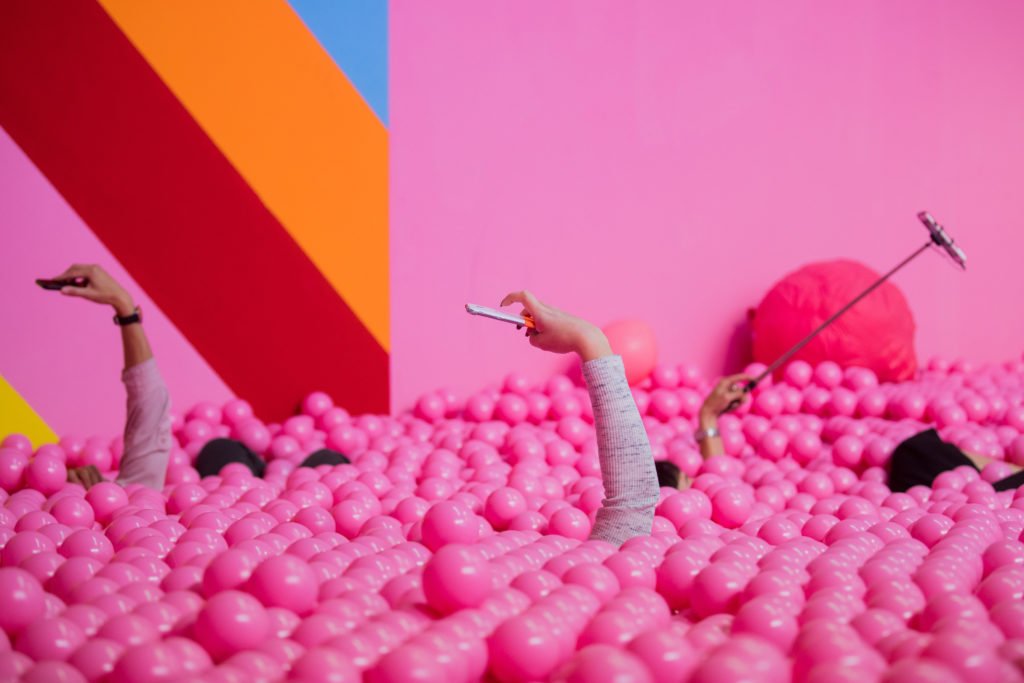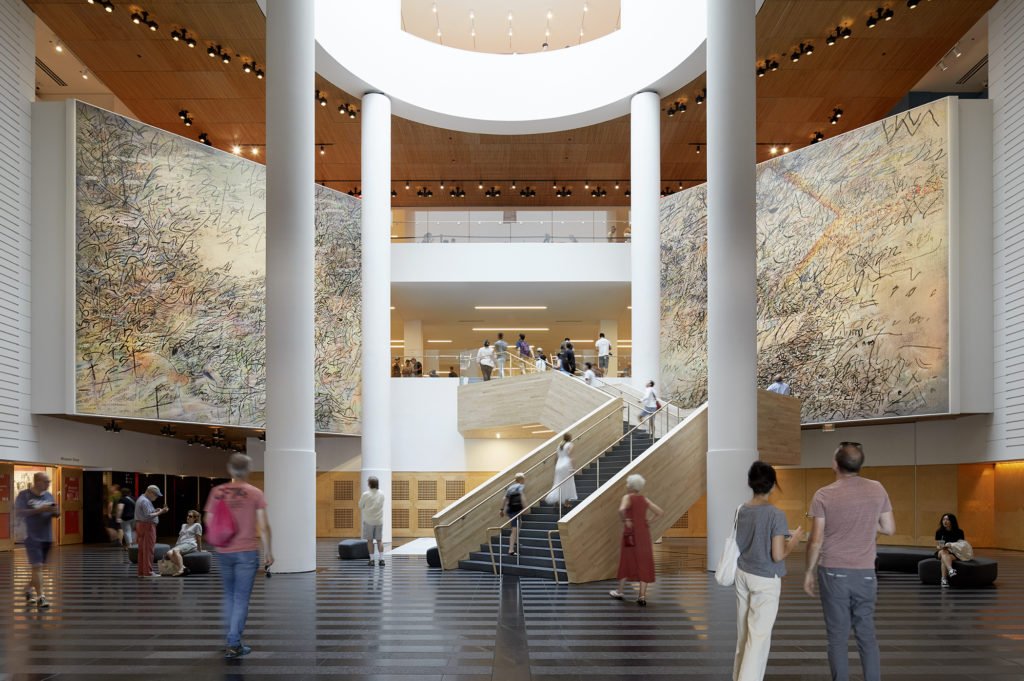More Than Ever, Art Workers Are Calling Out Their Employers—Anonymously—on Social Media. Can It Make Real-World Change?

Written by Catherine Wagley and published originally by artnet, December 21, 2020.
In June, as a pandemic raged and anti-racist uprisings filled streets around the world, fed-up art workers took to Instagram.
Thousands of museum and gallery employees had been furloughed or laid off since lockdowns began in March—an especially harsh blow to those who had spent the past few years fighting for improved working conditions and diversity at their museums.
When institutions started posting their own #BlackLivesMatter statements following the murders of George Floyd, Breonna Taylor, and Ahmaud Arbery, it was the last straw for some who had experienced and tried to address racism at those same workplaces.
Groups huddled over late-night Zoom calls to pen and publish open letters stating their concerns; others wrote op-eds and even resigned publicly in protest.
But 2020 will also be remembered as the year that many art workers aired their grievances on social media.
The rise of anonymous Instagram accounts has been driven by a perfect storm—or what arts manager and scholar Beth Ponte recently termed a “pandemic collision,” with layoffs, furloughs, shutdowns, and protests colliding with calls against the art world’s hypocrisy and complicity in systemic racism, labor abuses, and so much more. These accounts were defined by their collective nature (there is power in numbers) and their anonymity (to guard against retaliation in an economically precarious climate), contributing to the sense that they were part of a movement.

Accounts Rising
Three accounts debuted the second week of June: @changethemuseum began posting anonymous accounts of racism in museums, with the stated aim of “pressuring US museums to move beyond lip service proclamations by amplifying tales of unchecked racism.” @noneutralalliance and @xsfm0ma both focused on calling out alleged racism and toxicity at SFMOMA; @ABetterGuggenheim, which began posting in July, did the same for the New York museum. More accounts followed: @surviving_the_artworld called out alleged predatory behavior in Montreal, and @cancelartgalleries began sharing stories of commercial galleries’ “discrimination, exploitation, and abuse.”
Since then, some of these accounts have accrued tens of thousands of followers. Cumulatively, their followings exceed 60,000. Museum leaders, among others, consider it appointment reading—even if they don’t want to admit it publicly.
The approach isn’t unique; the #MeToo era brought an upswing of call-outs, such as the widely circulated and similarly controversial “Shitty Media Men” list. That movement also fueled a few early art-world initiatives that predated this summer’s wave, like Art+Museum Transparency, which in 2019 circulated an anonymous salary spreadsheet. #MeToo “was generally creating an environment in which victims of injustices—both huge and small—were empowered to speak,” says Tom Hopkins, who co-founded @FairMuseumJobs in 2018.
The group, formed with Louise McAward-White, Ashleigh Hibbins, and Catriona Wilson, opted to go anonymous after Hopkins received pushback for earlier tweets about poor museum recruitment practices and, he says, “one instance of what I perceived to be intimidation.” But with a growing following and online support, as well as an increased sense of job security among its members, the account’s founders have since reversed course and revealed their identities to host public events, like a recent online careers summit.
Scene and Herd, or @herdsceneand, formed in 2018 out of “a moment of ‘feminist snap’” at a time “when no blueprint or any other platform existed,” according to the account’s founders, who responded to questions anonymously. Early on, Scene and Herd tagged multiple posts #MeToo, connecting themselves with the anti-sexual-abuse wave then spreading beyond entertainment and media. “We wanted to hurt the beast where it would really hurt—even if for a second,” they say, “and so yes, we participated within a larger movement.”

Real-World Impact—and Backlash
Anonymity, which made the accounts seem more powerful and impenetrable than they otherwise might have been, also felt like a necessity. According to Scene & Herd’s founders, criticism is “taken very personally” in India’s contemporary art ecosystem. Anonymity “protected us somewhat from being targeted” and also kept their effort from being reduced “to a case of ‘he said, she said’ instead of looking at this as a larger systemic problem.”
Still, there were real-world consequences: After the account posted anonymous accusations against the prominent artist Subodh Gupta, he sued the creators of the account for defamation and sought to compel them to identify themselves. The parties reached a settlement in February in which Gupta agreed to withdraw his suit in exchange for an apology from the account and the removal of the relevant posts.
Other accounts have also reportedly received threats. @surviving_the_artworld stopped posting on July 26 after receiving a cease and desist order from artist Jon Rafman, who had been named in previous posts. (“We are disheartened that this is the response,” they said on Instagram at the time.)
The online endeavors have also had offline impact. Three museums, including the Hirshhorn in Washington, DC, suspended a planned Rafman exhibition in the wake of @surviving_the_artworld’s posts. (Originally scheduled for fall 2020, the show is no longer listed among the Hirshhorn’s upcoming exhibitions, though a spokesperson says all shows are currently on hold after the museum’s nine months of closure.)
Rafman told Artnet News at the time that he understands “that institutions are under immense pressure,” adding that he believes “due process is incredibly important in these situations.”
When @cancelartgalleries posted about former Contemporary Arts Museum in Houston (CAMH) curator Bill Arning’s alleged pattern of sexual misconduct (which he denies), multiple press outlets followed up and the curator delayed his new gallery’s inaugural exhibition.
Formerly silent about the reasons behind Arning’s departure, CAMH also released a statement acknowledging that they had removed Arning from his position in 2018 following credible allegations of improper, but not illegal, behavior. The museum said they had reported the allegations made by @cancelartgalleries to the Houston Police Department.

A New World
The momentum that grew in the wake of anti-racist uprisings this summer fed on a collective energy that predated the pandemic. But as Beth Ponte explains, “the pandemic also works as an accelerator of changes and exposes some things that were not working for a long time before.”
Evan Nierman, CEO of crisis-communications firm Red Banyan Public Relations, who recently wrote about how Ellen DeGeneres handled allegations of toxic on-set behavior, has seen similar social media call-out accounts emerge across a number of sectors.
“This is such a politically charged atmosphere,” he says. “There is so much anger right now, and there are so many potential pitfalls from a crisis management perspective. It’s an overwhelming, stressful time, especially for small and mediums organizations.” He cites not only the #MeToo movement and the “phenomenon of cancel culture” as factors, but also conditions endemic to the pandemic: “People are angry, frustrated, they’re out of work, and they need a platform to blow off steam.”
Nierman believes that allegations of racism, safety violations, and harassment need to be aired, especially if doing so could lead to institutional change. “At the same time, these Instagram feeds contain a mix of comments and grievances,” he notes. “Some of the complaints come from junior-level employees who are seeing a small piece of a puzzle or painting with a broad brush. I think people need to understand that they may not have a full picture.”
The anonymous nature of these accounts has indeed raised concerns not only about the misrepresentation or exaggeration of events, but also that people may be telling stories that are not theirs to tell. This summer, @changethemuseum added a disclaimer to all posts that “individuals facing discrimination who are mentioned in this story” had given their permission to share.
As the @changethemuseum team explained over email, “All story submissions are validated through research and sources before posting. We take this work very seriously and would never want to undermine the safe space that has developed through the account.” They are in this work for the long haul, they add: “We want to see more than just scapegoats in the headlines. We want to see systemic changes.”
The founders of Scene and Herd, meanwhile, see the social-media efforts as just one part of the push for change. “An Instagram account is not the beginning and end of how our activism works,” they say, acknowledging that they spoke out for this article “to let those in power know not to take our silence as having given up on the work we do.”
Tom Hopkins hopes that by “contributing to the spirit and environment of openness and transparency within the sector, we will make a space where it is even harder for abusers, bullies, and harassers (whether sexual, economic, or power-structural) to escape consequences.”
For Ponte, this approach is particularly important and effective for larger, traditional cultural institutions where “the leadership’s not open. It’s not transparent. It’s normally super, super vertical.”
The myth of artistic genius permeates art museums, contributing to heroic—or egoic—leadership models. “This can easily turn into situations that are not rare in the cultural sector,” Ponte explains, “in which the abuse of power is taken as a part of the organizational culture.”